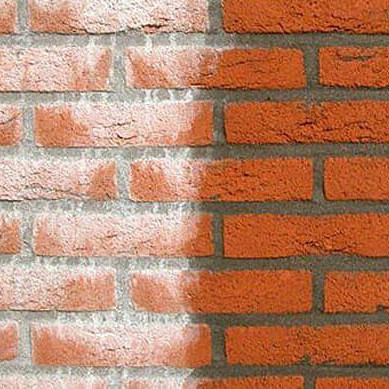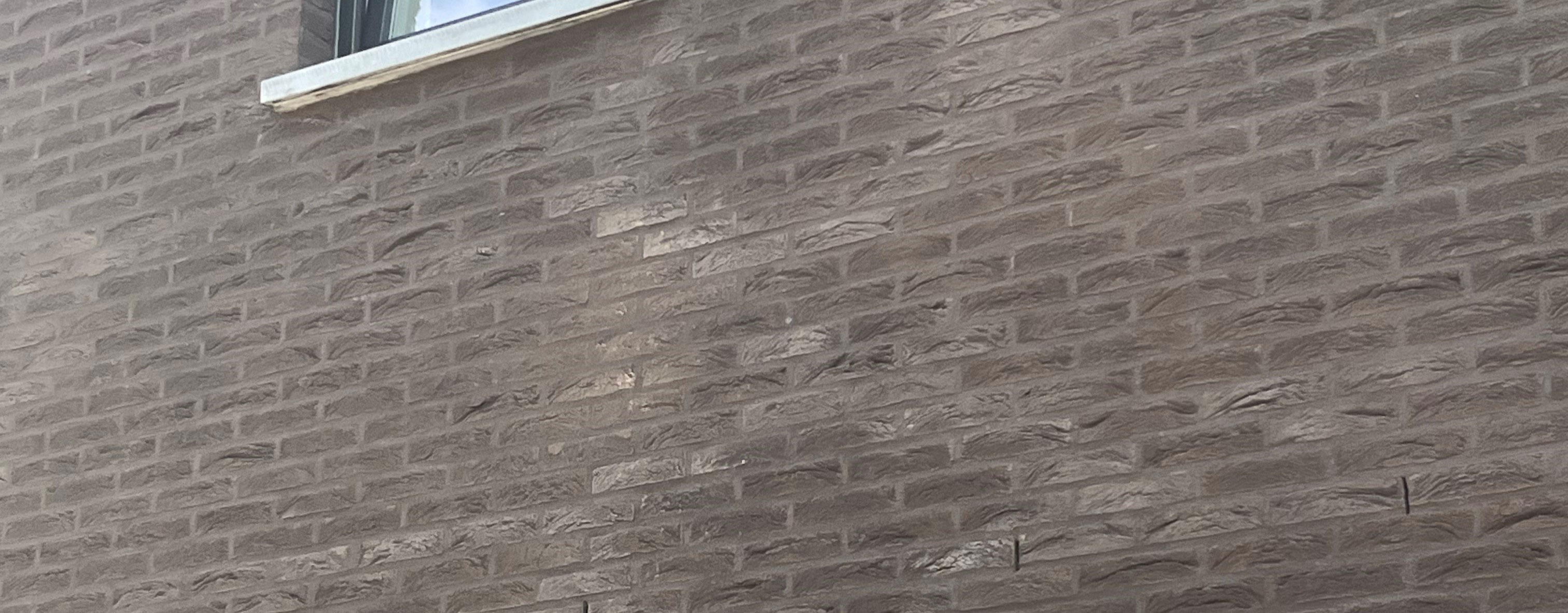Kort samengevat
Both renovation and new construction can be confronted with both salt efflorescence and cement shrouds. Both problems affect both the aesthetics and the durability of the façade, but have different causes and therefore an adapted removal technique.
Cement veil

Cement residue is created when grouting or plastering brickwork. Remains of cement or grout remain on the façade. In combination with rainy weather, the residues are diluted and an unwanted haze or discoloration is created, making the façade look spotty. Fortunately, a cement veil can easily be removed with the correct cleaning method.
RC Cement Clean 2 With its unique formula, without salt or phosphoric acid, has been specially developed to remove cement residue on masonry. The product penetrates the cement veil and dissolves it completely.
Salt efflorescence
When substances present in the masonry are deposited on the surface during drying, after contact with excessive water (construction moisture and rain), a white/grey haze or bulge may form.
We can distinguish three types of efflorescence, salt efflorescence, lime efflorescence and gypsum efflorescence. Each type requires a different treatment to remove the efflorescence.
A first common type is the salt efflorescence. This mainly occurs when there is excessive contact with water during bricklaying or grouting, but can also occur due to rising groundwater. Water-soluble components are transported to the surface via the pores of both the stone and the joint. During the drying up of the façade, the salts present will crystallize. This creates a visible white haze, also known as an 'early' white bloom.
To effectively treat salt efflorescence, first thoroughly remove the salt crystals present by wiping the surface with a stiff brush. This removes the loose salt crystals and prepares the surface for treatment with RC Sulfastop ZB.
RC Sulfastop ZB is an advanced liquid solution that has been specifically developed to address salt efflorescence. This solution forms a protective barrier against salts and prevents them from migrating to the surface, making the façade look clean and tidy for longer.

A more persistent type of efflorescence is the calcium efflorescence or lime leaching. This mainly occurs with fresh masonry in combination with rain. The mortar joints are excessively stressed during the rain, delaying the carbonation (the absorption of CO² from the atmosphere, giving the mortar its strength) of the free lime in the joint mortar.
Calcium exudate mainly forms in the mortar joints and continues on the visible surface of the stones or as a narrow spot under the butt joints. This white deposit can only be removed with special acidic cleaning agents such as our RC Façade P.
RC Façade P is a ready-to-use, thixotropic facade cleaner with a pH value of less than 1. This cleaning agent gently but extremely effectively dissolves surface contamination or lime efflorescence. Can only be used on brick, architectural concrete and other porous, acid-resistant surfaces.

A last type of efflorescence only forms after a while, namely gypsum or calcite efflorescence. In the technical jargon, this is also described as''gypsum'. In this process, the lime efflorescence has further bound itself with the CO² in the air and forms an insoluble gypsum layer. This persistent white veil only settles after a few months or even years and expands systematically.
Plastering masonry or bricks is difficult to remove; mechanical cleaning is often the only solution.




